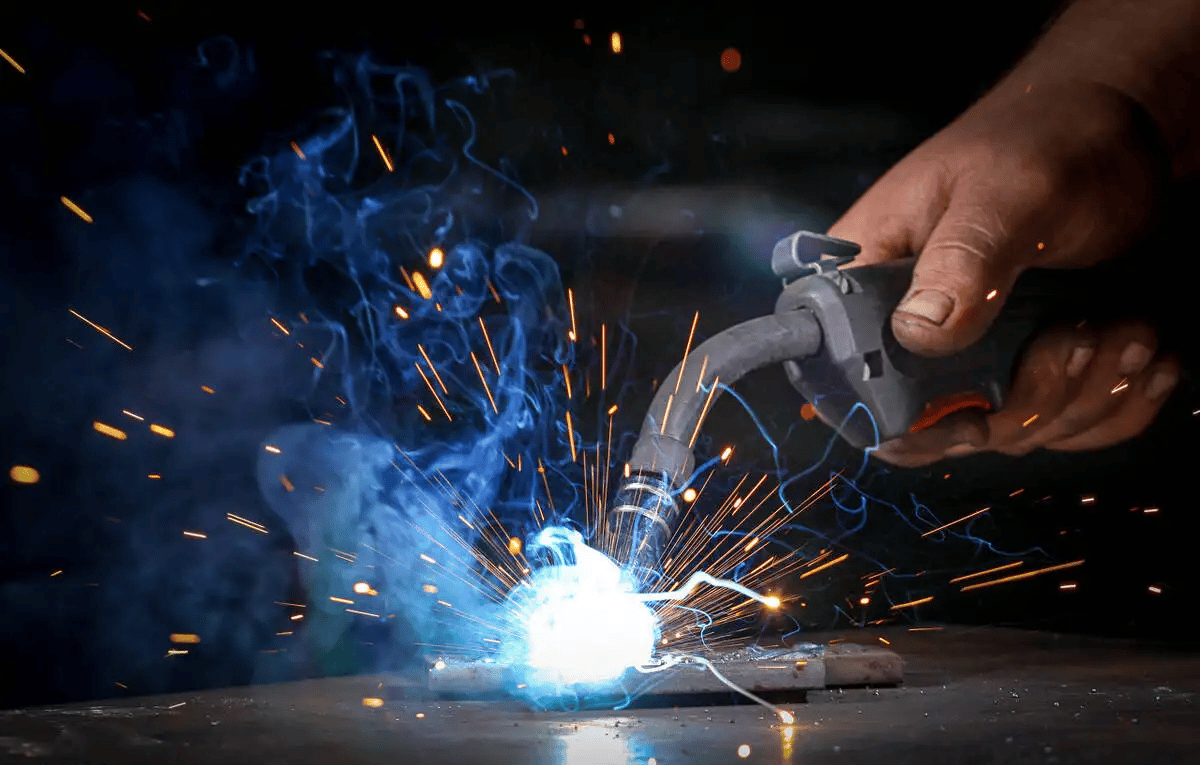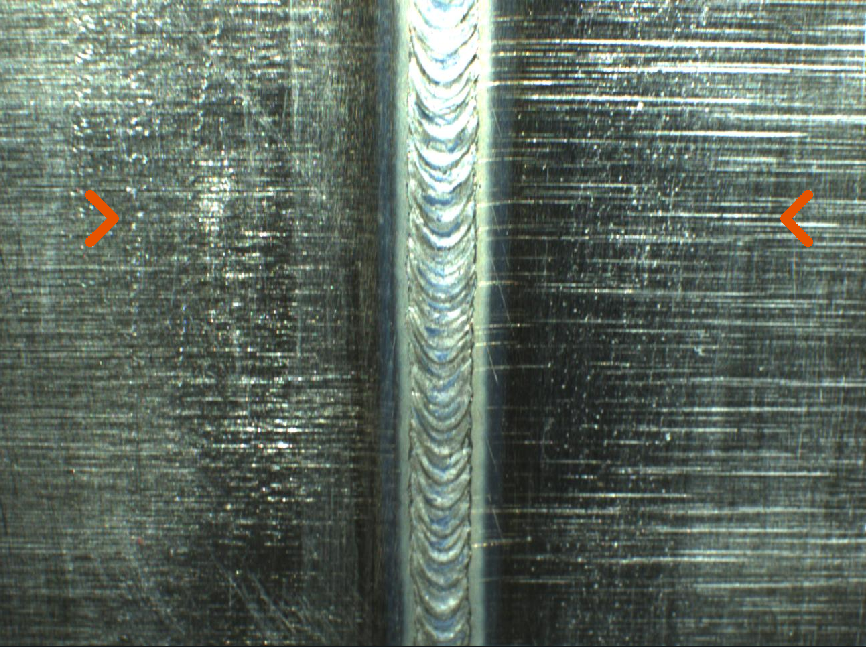Welding Inspection Racine: Guaranteeing Accuracy and Dependability in Every Weld
Welding Inspection Racine: Guaranteeing Accuracy and Dependability in Every Weld
Blog Article
Cutting-edge Techniques to Fillet Weld Evaluation and Testing: Enhancing Weld Top Quality and Conformity Criteria
In the realm of welding, the high quality and honesty of fillet welds play a crucial function in ensuring the structural stability and integrity of different commercial components. With the continuous drive for boosted efficiency and conformity with strict standards, the exploration of innovative strategies to fillet weld inspection and screening has actually ended up being critical. As industries develop, the standard approaches might no more suffice in fulfilling the needs of contemporary welding applications. By accepting innovative innovations and methods, a brand-new perspective of opportunities arises in the world of weld quality analysis and adherence to conformity criteria.
Advanced Non-Destructive Testing Methods
Using state-of-the-art technologies, advanced non-destructive screening approaches play a critical function in making sure the honesty and top quality of fillet welds. These methods, such as phased range ultrasonic testing (PAUT) and magnetic particle screening (MPT), deal in-depth understandings right into the weld's interior framework without causing any damage to the product. PAUT, for example, uses multiple ultrasonic aspects to examine the weld from different angles, supplying a detailed visualization of possible problems like absence of combination or fractures.
Likewise, MPT is reliable in spotting surface-breaking flaws by applying a magnetic field and iron bits to the weld area. This technique is especially beneficial for identifying suspensions that may compromise the weld's stamina. By utilizing these sophisticated non-destructive testing methods, weld inspectors can precisely examine the top quality of fillet welds, ensuring compliance with industry requirements and policies. The capacity to identify problems at an early stage not only improves weld quality however likewise protects against costly rework or failures in architectural honesty, underlining the significance of these cutting-edge testing strategies in welding examinations.
Robotics and Automation in Evaluation
The assimilation of robotics and automation has actually transformed the evaluation procedure for fillet welds, boosting effectiveness and precision in high quality evaluation. Robotics provide specific control and repeatability in evaluating welds, guaranteeing trusted and regular results. Automated systems can be programmed to follow particular inspection paths, guaranteeing comprehensive insurance coverage of welds and decreasing the danger of human mistake.
Robotic examination systems equipped with sophisticated sensors can detect and measure weld functions with high accuracy, offering comprehensive information for evaluation. These systems can recognize defects such as splits, lack of combination, and porosity, enabling punctual rehabilitative actions to be taken. Additionally, robotics and automation enable real-time data collection and analysis, offering immediate comments to drivers and helping with fast decision-making processes.
Moreover, using robotics and automation in fillet weld examination boosts overall efficiency by reducing examination times and increasing inspection throughput. By streamlining the examination procedure, suppliers can make sure weld quality and conformity requirements are met efficiently, inevitably leading to set you back financial savings and enhanced product quality.
Using Expert System for Analysis
Fabricated intelligence plays a crucial function in enhancing the efficiency and accuracy of analysis in fillet weld assessment procedures. AI algorithms can rapidly refine huge quantities of data from weld examinations, finding defects or incongruities that may be challenging to recognize with the nude eye - Welding Inspection Racine.
Additionally, AI systems can gain from previous examination information, continuously enhancing their capacity to identify prospective issues and inconsistencies in fillet welds. This flexible understanding capability enhances the overall quality control procedure, reducing the probability of human mistake and ensuring that welds meet the called for criteria. By incorporating expert system right into fillet weld evaluation, sectors can attain greater levels of efficiency, consistency, and compliance in their inspection practices.
Portable Devices for On-Site Examination
 Enhancing area examination performance, the adoption of portable devices reinvents on-site assessment procedures for fillet welds. These devices offer adaptability and comfort, enabling assessors to conduct comprehensive assessments in different areas, including remote or challenging environments. Mobile devices such as ultrasonic testing devices, magnetic fragment assessment devices, and digital radiography systems supply real-time data and high-resolution imaging capabilities, allowing fast decision-making and instant responses on weld quality.
Enhancing area examination performance, the adoption of portable devices reinvents on-site assessment procedures for fillet welds. These devices offer adaptability and comfort, enabling assessors to conduct comprehensive assessments in different areas, including remote or challenging environments. Mobile devices such as ultrasonic testing devices, magnetic fragment assessment devices, and digital radiography systems supply real-time data and high-resolution imaging capabilities, allowing fast decision-making and instant responses on weld quality.One significant advantage of mobile devices is their capability to enhance assessment treatments, lowering downtime and enhancing overall productivity. Assessors can quickly transport these tools to different task websites, removing the need for transporting heavy equipment or components to off-site facilities. In addition, the portability of these tools advertises cost-effectiveness by decreasing transportation expenditures and speeding up evaluation timelines.
Moreover, using portable devices for on-site inspection advertises proactive quality assurance procedures, as assessors can immediately recognize and attend to any potential welding flaws or discrepancies. By including these innovative modern technologies into on-site inspection techniques, welding specialists can make sure conformity with industry requirements and boost weld top quality, eventually bring about enhanced architectural integrity and safety and security in various welding applications.
Assimilation of Data Management Equipment
Having maximized on-site assessment processes via the usage of mobile tools, the Discover More Here following stage entails the smooth assimilation of information management systems to better improve effectiveness and data analysis abilities in fillet weld evaluation and testing. Welding Inspection Racine. By integrating data administration systems right into the evaluation process, companies can enhance information collection, storage, and analysis. This combination enables real-time surveillance of weld quality, immediate recognition of defects, and prompt decision-making to fix any type of issues that may develop throughout the examination procedure
Data administration systems play an essential duty in systematizing assessment data, assisting in very easy access for licensed workers, and guaranteeing information integrity and safety and security. With the combination of these systems, examiners can produce thorough reports, track historical information for pattern evaluation, and improve overall process efficiency. Furthermore, the assimilation of data administration systems enables seamless interaction between different stakeholders entailed in the examination procedure, fostering partnership and boosting general quality assurance steps. Ultimately, the assimilation of data management systems offers to raise the standards of fillet weld assessment and testing, making certain conformity with sector guidelines and boosting weld high quality.
Final Thought
In final thought, innovative approaches to fillet weld inspection and testing have actually substantially boosted weld quality and conformity criteria. Advanced non-destructive testing techniques, robotics, automation, fabricated knowledge, mobile tools, and information management systems have reinvented the means weld evaluations are conducted. By utilizing these innovations, markets can make certain that welds satisfy the called for quality requirements and policies, ultimately improving overall effectiveness and safety and security in welding procedures.

By utilizing these advanced non-destructive testing techniques, weld examiners can precisely assess the top quality of fillet welds, guaranteeing conformity with sector standards and guidelines. Portable devices such as ultrasonic see testing gadgets, magnetic particle evaluation tools, and digital radiography systems offer real-time data and high-resolution imaging abilities, making it possible for quick decision-making and instant feedback on weld high quality.
Having maximized on-site assessment processes via the usage of mobile tools, the following stage involves the seamless combination of data administration systems to better improve performance and information evaluation capacities in fillet weld assessment and testing (Welding Inspection look at these guys Racine). Ultimately, the assimilation of data management systems offers to elevate the requirements of fillet weld assessment and testing, making sure compliance with sector laws and enhancing weld high quality
 In conclusion, ingenious methods to fillet weld evaluation and screening have significantly boosted weld high quality and compliance standards.
In conclusion, ingenious methods to fillet weld evaluation and screening have significantly boosted weld high quality and compliance standards.Report this page